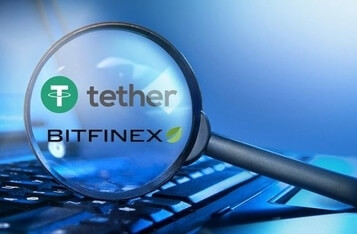Stablecoins and their role in the crypto space
Stablecoins have emerged as a crucial component of the cryptocurrency ecosystem, bridging the gap between traditional finance and the volatile world of digital assets. These digital tokens are designed to maintain a stable value, typically pegged to a fiat currency like the US dollar, offering users a way to preserve wealth and facilitate transactions without the extreme price fluctuations associated with cryptocurrencies like Bitcoin or Ethereum. This is why you may consider your ton to usdt swap right away to protect your savings from volatility. the most expensive
Why stablecoins are so attractive
The primary appeal of these tokens lies in their ability to combine the benefits of blockchain technology—such as fast, borderless transactions and programmability—with the stability of traditional currencies. This unique positioning has led to their rapid adoption in various segments of the crypto market, from trading and lending to remittances and decentralized finance (DeFi).
In the trading sphere, these tokens serve as a vital tool for crypto traders and investors. They provide a safe haven during market turbulence, allowing traders to quickly move their assets into a stable store of value without the need to convert back to fiat currencies. This capability is particularly valuable in a market known for its high volatility and 24/7 trading of the most expensive cryptocurrencies. Moreover, stablecoins facilitate easier arbitrage between different exchanges and trading pairs, enhancing overall market liquidity and efficiency.
The rise of DeFi has further amplified the importance of this asset type. These protocols, which aim to recreate traditional financial services on blockchain networks, heavily rely on stablecoins as a foundational layer. Lending platforms, decentralized exchanges, and yield farming protocols often use stablecoins as collateral or as a means of distributing rewards. The stability and programmability of these tokens make them ideal for smart contract interactions, enabling complex financial operations without the risk of significant value fluctuations during transaction processing.
This asset also plays a crucial role in cross-border payments and remittances. Traditional international money transfers can be slow, expensive, and subject to multiple intermediaries. These cryptocurrencies offer a faster and often cheaper alternative, allowing users to send stable value across borders quickly and with minimal fees. This application has particular significance in regions with unstable local currencies or limited access to banking services.
Challenges that stablecoins face
However, the growing influence of stablecoins in the crypto ecosystem has not been without controversy. Regulatory scrutiny has intensified, particularly regarding the reserves backing these tokens and their potential impact on monetary policy. The collapse of algorithmic stablecoins like TerraUSD in 2022 highlighted the risks associated with certain models and underscored the need for robust backing and transparent auditing processes.
Despite these challenges, the stablecoin market continues to grow, with major players like Tether (USDT), USD Coin (USDC), and Binance USD (BUSD) commanding significant market capitalizations. The evolution of stablecoins has also led to innovations such as decentralized stablecoins, which aim to maintain stability through algorithmic mechanisms and over-collateralization rather than relying on centralized reserves.
Looking ahead, the role of these assets in the crypto ecosystem is likely to expand further. As traditional financial institutions and corporations show increasing interest in blockchain technology, coins with stable prices could serve as a gateway for broader adoption of digital assets. They may also play a pivotal role in the development of central bank digital currencies (CBDCs), potentially influencing how governments approach the digitization of national currencies.
The integration of stablecoins into various blockchain-based applications continues to drive innovation in areas such as tokenized real-world assets, supply chain finance, and decentralized insurance. As the technology matures and regulatory frameworks evolve, stablecoins could become an even more integral part of both the crypto ecosystem and the broader financial landscape.
In conclusion, stablecoins have established themselves as a critical infrastructure within the cryptocurrency world, facilitating trading, enabling DeFi applications, and providing a stable medium of exchange. While challenges remain, particularly in terms of regulation and maintaining trust, the utility and potential of this type of coins suggest they will continue to play a pivotal role in the world of crypto.
Disclaimer: This publication is provided by the client. We does not endorse and is not responsible for the content, accuracy, quality, advertising, products, or other materials on this page. Readers are advised to conduct their own research before taking any action related to the company. We are not liable for any damage or loss, directly or indirectly, caused or alleged to be caused by or in connection with the use or reliance on any content, goods, or services mentioned in this post.
Read More
a16z Crypto Backs Daylight's Decentralized Energy Protocol
Jul 31, 2024 4 Min Read
Tether Reports Record $5.2 Billion Profit in H1 2024, Achieves Highest Treasury Bill Ownership
Jul 31, 2024 4 Min Read
Understanding Tezos Smart Rollups: Key Features and Benefits
Jul 31, 2024 4 Min Read
Circle Introduces Key Updates for Web3 Services in July 2024
Jul 31, 2024 4 Min Read
Bitcoin Mining Industry Faces Challenges and Opportunities in 2024 Mid-Year Report
Jul 31, 2024 4 Min Read



